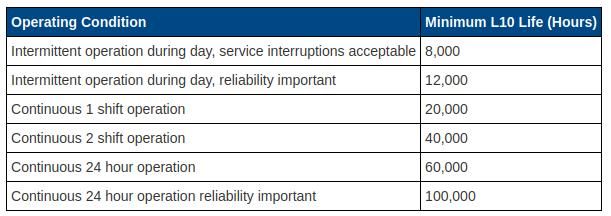Posted by Bob Stevenson on 11/05/2021 07:55:31:
…When I was involved with 'vintage' Volkswagens I repacked and adjusted the front wheel tapered roller bearings every 6 months or so
…
The point about WM bearings is that one cannot even know how well lubrication has been carried out or even what lube has been used, quite apart from complete ignorance as to the quality of the bearing used…
……Some decent design whould not have been amiss I think…(?)
Bearings, and why they fail, have been much researched. Sealed roller bearings outperform other types – last longer and are more reliable. The problem is dirt. Open bearings are extremely vulnerable to contamination resulting in rapid wear. Open bearings need frequent maintenance, and – on average – even if cared for properly, still clap out faster than sealed units.
Though convincing, the advantage isn't universal. Much depends on what the bearing is doing. Roller bearings aren't suitable for all purposes, and sealing a poorly made bearing doesn't magically fix other faults. However, when a machine has a limited life, and they all do, it usually pays to fit the cheapest bearings that last longer than the machine. Unless done for free by an enthusiastic amateur and downtime doesn't matter, maintenance is gob-smacking expensive. In a clean location a cheaper unshielded bearing, or Oilite, or even an axle running in cast-iron might be good enough.
As always, there's a balance. Wheel bearings are a good example – they work hard in dirt. Early on, the answer was regular maintenance in hope new grease would force out any muck that had penetrated. Didn't work that well, the old-bangers of my early motoring all needed replacement wheel bearings. Much time and money wasted. Old-fashioned wheel bearings screamed 'room for improvement' and eventually it happened, hurrah. Cars are more reliable now I don't have to crawl underneath with a grease gun every 6 months!
Same problem with production tools; while an employee might not care about downtime, the owner has to keep tools operating. Machines that aren't cutting metal are burning money. Ideally the bearings are maintenance free, and if they do need replacement it can be done quickly. To achieve high reliability, a production lathe is probably fitted with high-specification bearings. Home machines are much less cost critical: my lathe is fitted with distinctly ordinary sealed bearings, still fine after 5 years light use. If they fail, I shall replace them with better, but so far so good!
Bearing life is measured as the number of revolutions before any sign of fatigue can be detected. How many of us us have any idea what our bearings are rated for, or how many revolutions the bearings have already done, or how many revolutions we add per year? Understanding the numbers reveals if the design is good or bad. I feel even mildly neglected inferior bearings should last years in amateur hands without much fuss.
How much time does your lathe spend cutting per week? Not much in my case, I'd guess about an hour per week on average. From this table, at that rate, a rather ordinary bearing will last 150 years. Someone cutting a hour a day, might get 20 years. Note that although the ordinary bearing is OK for the likes of me, it's no good for anyone needing 'Continuous 24 hour operation, reliability important'.
 Over specification in engineering is an egregious sin. 'Engineering is the art of doing for 10 shillings what any fool can do for a pound'. Incidently, the quotation has been attributed to George Stevenson, the Duke of Wellington and Neville Shute. I'm sure it predates Neville. Does anyone know for sure – it's not in my Dictionary of Quotations.
Over specification in engineering is an egregious sin. 'Engineering is the art of doing for 10 shillings what any fool can do for a pound'. Incidently, the quotation has been attributed to George Stevenson, the Duke of Wellington and Neville Shute. I'm sure it predates Neville. Does anyone know for sure – it's not in my Dictionary of Quotations.
Dave
Bob Stevenson.





